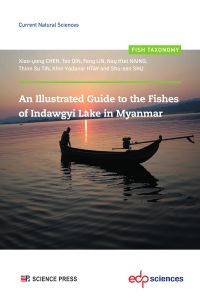An Illustrated Guide to the Fishes of Indawgyi Lake in Myanmar
Éditeur : EDP Sciences
ISBN numérique PDF: 9782759832446
Parution : 2024
Catégorisation :
Livres numériques /
Autre /
Autre /
Autre.
Formats disponibles
| Format | Qté. disp. | Prix* | Commander |
|---|---|---|---|
| Numérique PDF Protection filigrane*** |
Illimité | Prix : 114,99 $ |
*Les prix sont en dollars canadien. Taxes et frais de livraison en sus.
***Ce produit est protégé en vertu des droits d'auteurs.
Description
Indawgyi Lake in Kachin State, North Myanmar is one of the largest lakes in Southeast Asia. Based on five times of surveys on fishes of Indawgyi Lake from 2018 to 2023, 4509 specimens of around one hundred species were collected by an aquatic biodiversity research group led by Dr. Xiao-yong Chen, a senior expert on fish taxonomy. In this book, 97 species, except a poor known swamp eel, Monopterus cuchia, two unidentified species, Oryzias sp. and Microrasbora sp., and a local alien species, tilapia, Oreochromis nilotica, and an imported cultured fish, common carp, Cyprinus carpio were briefly introduced about their diagnosis, biology, status, and distribution, as well as photographs of living or fresh specimens. Well-illustrated and clearly written, this book will provide some basic information about fishes in this special fauna for researchers, students, fish lovers, tourists, local communities, and managers of natural resources.























